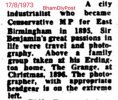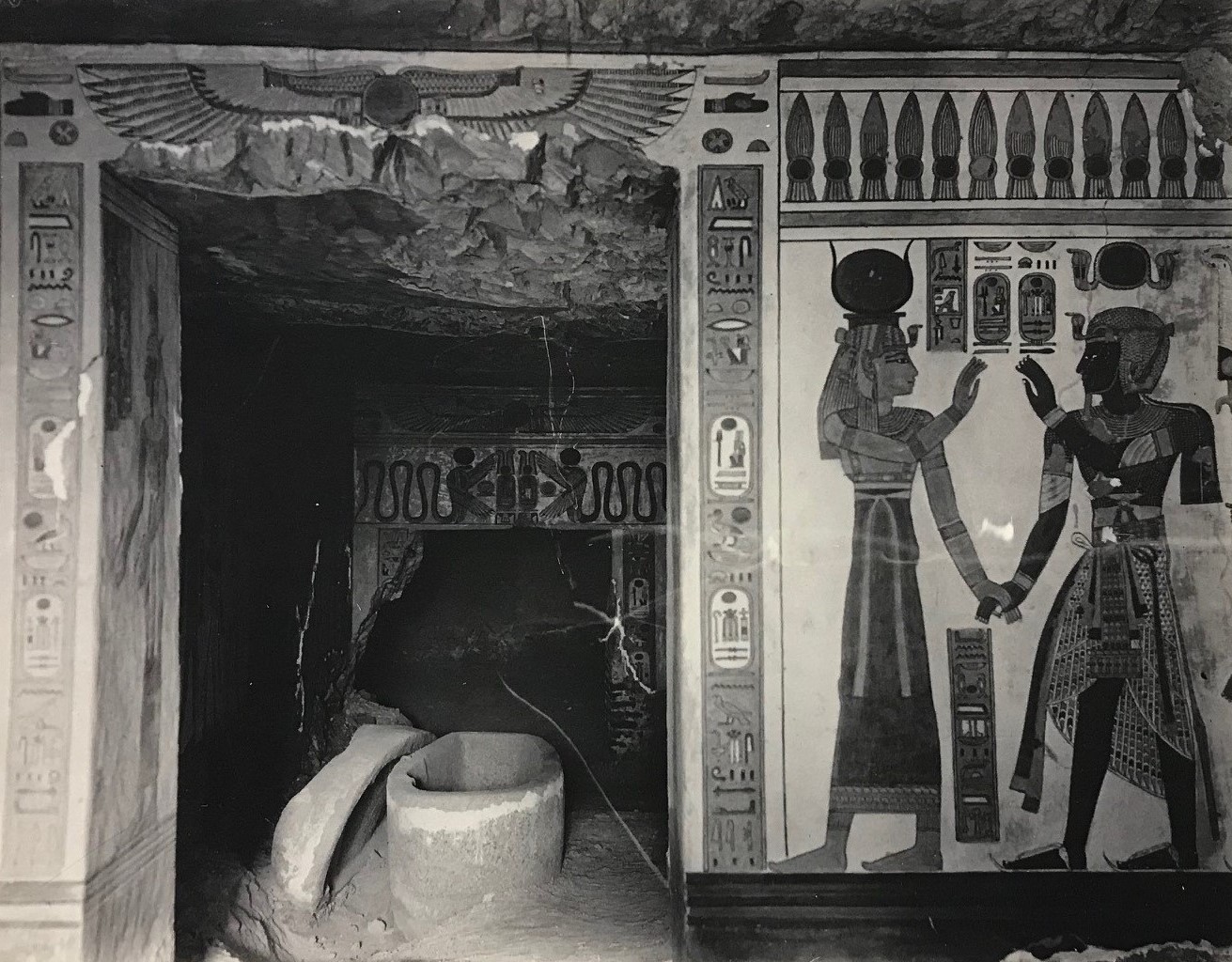For an established view of Sir John Benjamin Stone (1838-1914) a good concise biography is in the Oxford Dictionary of National Biography and written by our own Carl Chinn.
https://www.oxforddnb.com/view/article/38559?docPos=2
One that goes a "little" further is the Albion Chronicles quoted by Jennyann above.
But they don't tackle some fundamental questions. How did John Benjamin Stone acquire such a great fortune in such a short time? How were the workers in the factories treated? Given the time he spent on his hobby of photography, and his extensive love of travel, how well did he perform his duties as MP for East Birmingham, councillor for Duddeston, on the Board of Governors, first mayor of Sutton Coldfield and Magistrate? And of course could he really be considered as philanthropist in the true sense of the word just by his association with many cultural and philanthropic foundations including the Birmingham Institute, Mason's Orphanage, the Children's hospital, and the Blue Coat School?
Sir John's father Benjamin's occupation in the 1851 census is described as a Clerk at Glassworks, and he was living in Lupin Lane. He may also have been a partner, but must have been quite well-off as he could send his son to King Edward's School. On the retirement of the owner of the Union Glassworks, probably a Mr Bacchus, Benjamin Stone took control and was joined by his son John. By the 1861 census John would be at Lupin Lane and described as son of Glass Manufacturer (Master). The firm traded under the name Messrs Stone, Fawdry and Stone... "It seems likely that the Stones provided the skills needed for running the glass works whilst Fawdry supplied the capital. It was a wise move for Fawdry did very well out of his association...."
In 1881 John had moved to The Grange, Erdington and his father Benjamin had moved to Sutton Street where he was still down as employing 90 men, 5 women and 3 boys. In 1892 he became Sir John.
It was not only the glassworks that made John Benjamin a fortune, but also his school friendship with Smith and Frederick Knight and the pact they made to go into business. They formed Messrs Smith, Stone and Knight and began to build a paper mill empire. "So out of an enterprise conceived at school the three families enjoyed ample fortunes." He also had an eye for success in business ventures at a comparatively early age, including being a director on the Argus Assurance Co.
In Sir John's obituary (1914) it says the involvement in the glassworks began when the "industry's prosperity was at its zenith....before the machinations of a particular trade union sapped the strength and caused, by its prohibitive restrictions and terms, all trade to go to Austria...the glass industry that he was involved with in the early days passed into other hands, and on the site of the old works, when they fell into destitude, was erected a well-known vinegar and sauce factory."
There happened to be in the year 1865 a Commission on Children's employment that reported on the Glass industry in Birmingham. Stone, Fawdry and Stone was one of the many glassworks visited, including the largest Chance's at Smethwick where conditions were much better.
"....The state of the places of work renders the labour of the boys sometimes irksome, sometimes placed between two fires...very hot strong draughts and a large amount of dust...putty powder, with lead as the chief ingredient flies off plentifully...sharp objects flying from the discs..." Mr White had measured the temperature near the head of one of the boys and found it to be 130 deg. At the mouth of the furnace where the boys sometimes had to go the heat was measured at 150 deg, and it caused Mr White's hat to be drawn out of shape! Needless to say that many recommendations were made.
I am not sure of the conditions in the paper mills but in August 1866 the was a fatality at Landor Street. The victim had no business in the section of the factory, and acted in a stupid manner by kicking a belt on a large pulley. However the belt had been repaired and the Inspector of Factories suggested that the drum be made wider or flanged. A verdict of Accidental Death was given.
In February 1890 a 14 year old boy was killed when a grindstone had split. The grindstone had been recently ordered but the spindle hole was too small and it had been chiselled out, it was also worked at between 180 and 220 rpm. Another verdict of Accidental Death was given. There was a claim made under the Employer's Liability Act and it stated that the hole had been enlarged negligently or unskillfully and had weakened the stone. The Chief Millwright should have been present when the stone was fitted but he did not give the matter adequate supervision. The speed should have been 120 to 130 rpm. The boy's representatives were awarded £20.
In March 1886 there was a drop in price of material from 30 to 20 pounds per ton, so Smith, Stone and Knight gave notice of a 33 per cent reduction of wages while other manufactures waited. They provoked a strike for which they were not prefered and they had to suspended their notice for a few days, but then it was renewed.
It is worth mentioning that in March of 1894 the Smith, Stone and Knight Company had been registered with a capital of £150,000 in £10 shares in order to acquire the freehold and leasehold properties known as Union Paper Mills, Landor Street...the Birmingham Paper Mills, Cattle Grove and Aston Paper Mills, Chester Street....there was to be at least 3 directors and not more than 5. (Of course the first three we know, and so a further two would probably not make much difference!)
There is no doubt that Sir John was a great photographer, and the Evening Despatch remarked that it was in the field of photography that he was best entitled to a niche in history. The Benjamin Stone Photographic Collection is housed in the Library of Birmingham presented by his trustees seven years after his death. A collection of 22,000 photographs, 600 stereographs, 2500 lantern slides, 17,000 glass negatives, 50 albums of collected prints, and 50 volumes of press cuttings relating to his work.
In 1897 he founded the National Photographic Record Association, of which he became president. The National Portrait Gallery holds 62 of his portraits and many photographs of people and places in and around Westminster. His amateur career culminated in 1911 with his appointment as official photographer to the coronation of King George V.
As an MP the Birmingham Argus described him as "a docile voting machine". He once told the girls of the Duddeston ward "not to have sweethearts who were not thoroughly good Conservatives." Like many others he took little part in debates, and was criticised for his frequent absences, even travelling abroad whilst an election was in process. But being at Westminster and an MP allowed him to photograph places that were out of bounds to others. His extensive travel took him to many far off places such as Brazil, Egypt, India, Norway, Switzerland, Italy and Japan. When he visited Rome he obtained permission to photo some priceless manuscripts in the Vatican Library. He accidentally came across three manuscripts of special interest to Welsh history, one being a letter from Pope Urban V and dated 1366.
I don't think Sir John was a philanthropist in the true sense of the word. Some degree of philanthropy must come from the heart and not just crumbs from the rich man's table. To be linked with philanthropic associations was just part of gentrification. It is often said that the Victorian entrepreneur gave employment to many, but the real people to be admired here are those that worked so hard in poor conditions to provide their masters with profit.
 ---
---










